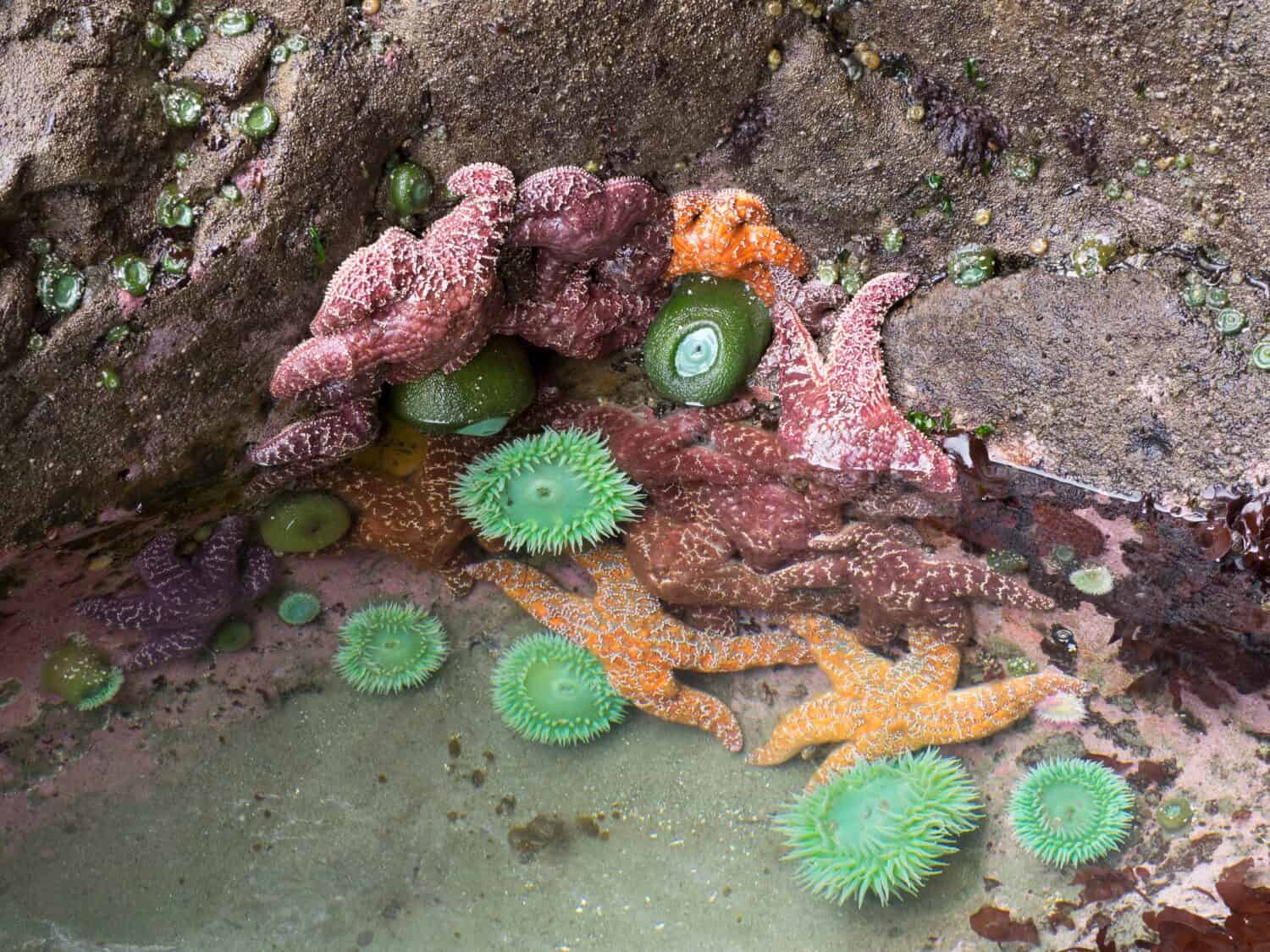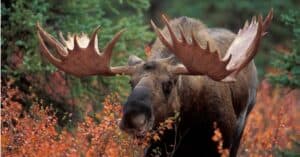You may step into a tide pool and not realize that you are surrounding by life. But if you take a closer look, you can appreciate this small ecosystem and identify the animals that call these environments home. These ecosystems are diverse, encompassing a range of animal and plant species. You can head out to explore these on your own or turn tide pooling into a family activity to introduce kiddos to the wonders of life in the water. Discover the nine most common creatures in tide pools!
1. Small Fish
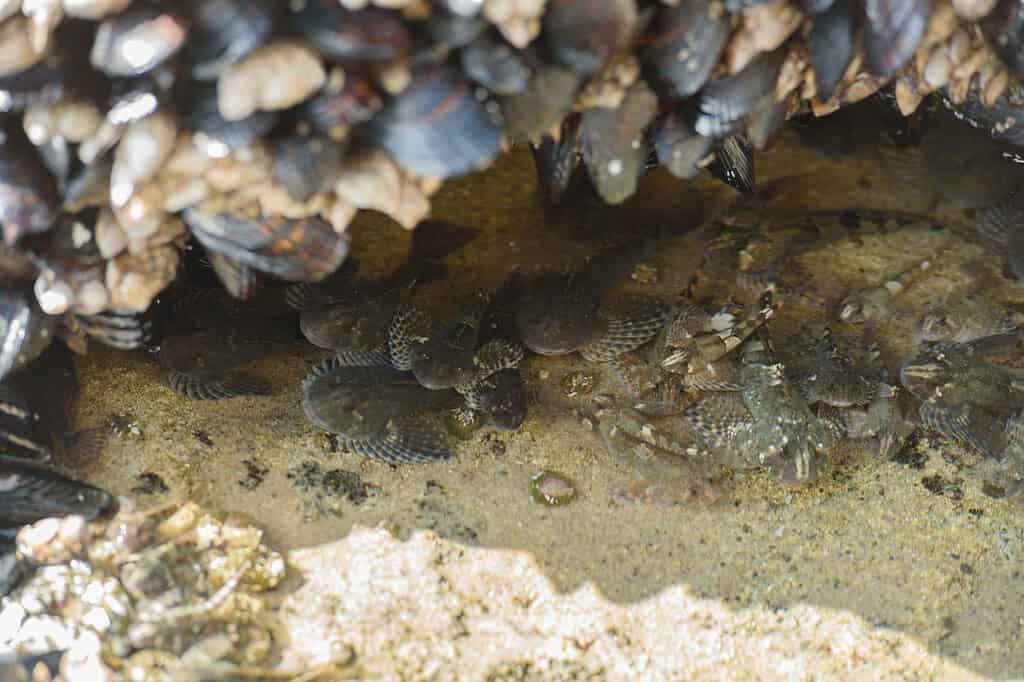
Lots of small fish inhabit tide pools.
©Elevated View Point/Shutterstock.com
Tide pools are home to a range of small fish like the tide pool sculpin, which scoots on the floor of the tide pool using its pelvic and pectoral fins. Other small fish in tide pools include the opaleye, northern clingfish, monkeyface eel, and more depending on the location.
2. Hermit Crab
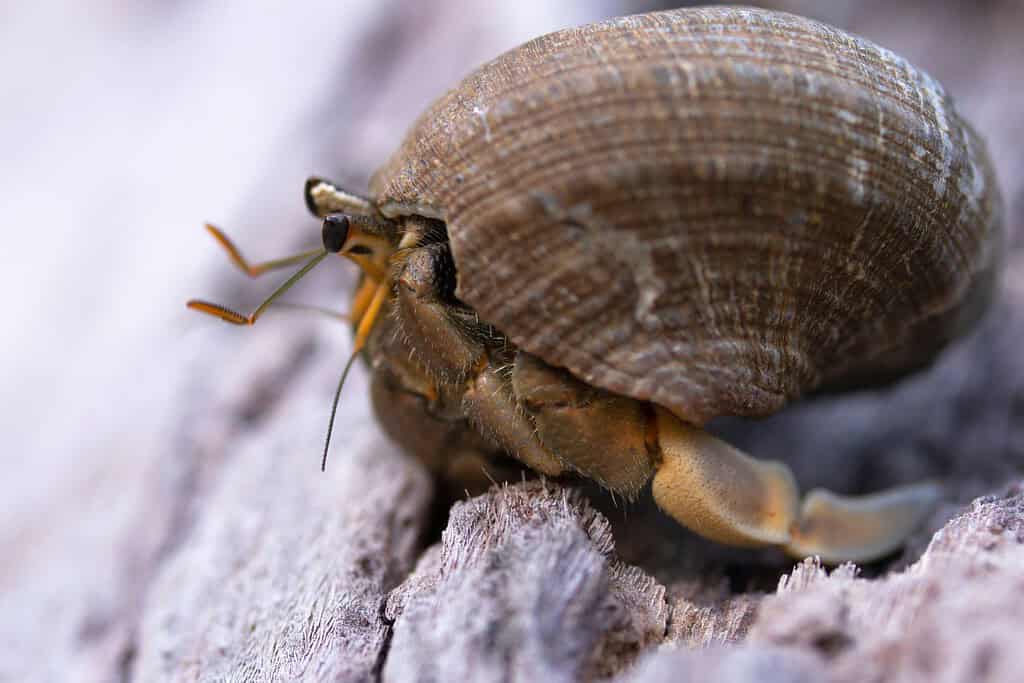
Crustaceans like hermit crabs are plentiful in tide pools.
©MarinaaaniraM/Shutterstock.com
When you visit a shoreline to explore the creatures in tide pools, you’re likely to spot a hermit crab. These hang out in groups and they live inside their shells for protection. The shells they live in are recycled after snails have abandoned them. As a hermit crab grows, it abandons its smaller shell for a more spacious one.
3. Urchins
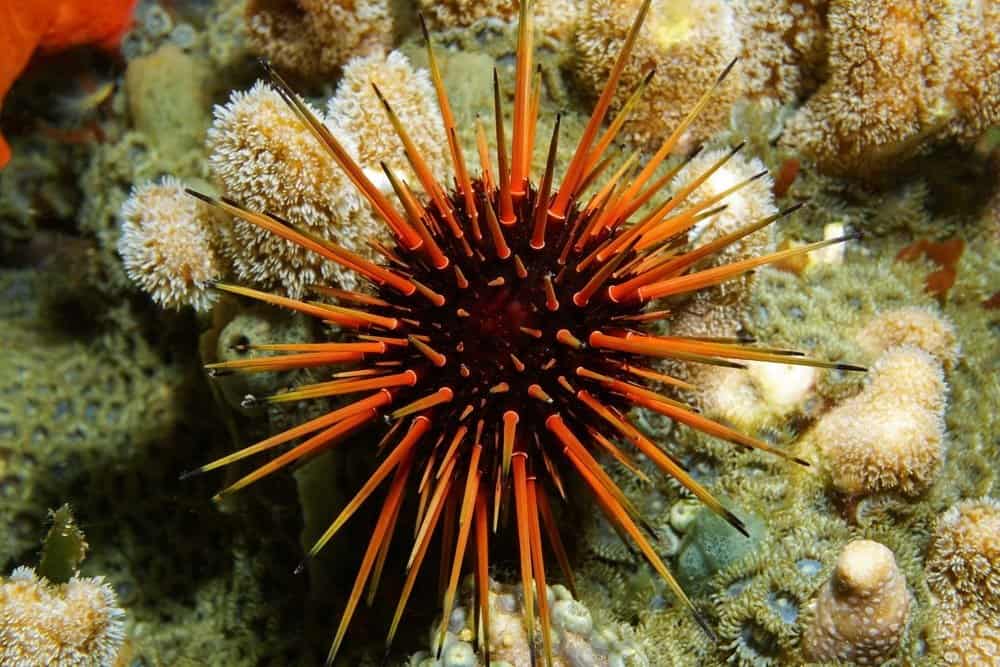
©Damsea/Shutterstock.com
The Natural History Museum refers to sea urchins as “strange and spiny wonders of the ocean.” These are invertebrates and their skin is made up of spikes. There are different urchin species, including the flower urchin, the sea potato, and black long-spined urchins. Some urchin species, particularly in the tropics, are equipped with venom in their spines.
4. Mussels
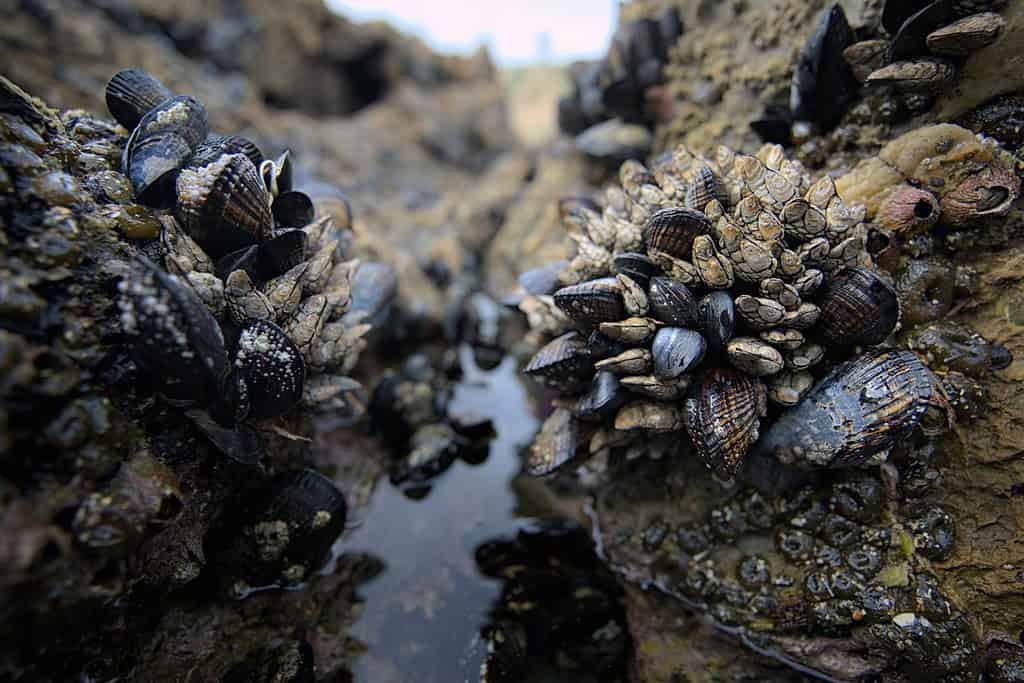
Mussels have squishy centers.
©Cavan-Images/Shutterstock.com
They are found in tide pools, but mussels also live in other environments like creeks and rivers. Purdue University explains that mussels have two hard outer shells and a soft middle. Though imperceptible, mussels are equipped with mouths, kidneys, a stomach, and a heart.
5. Snails
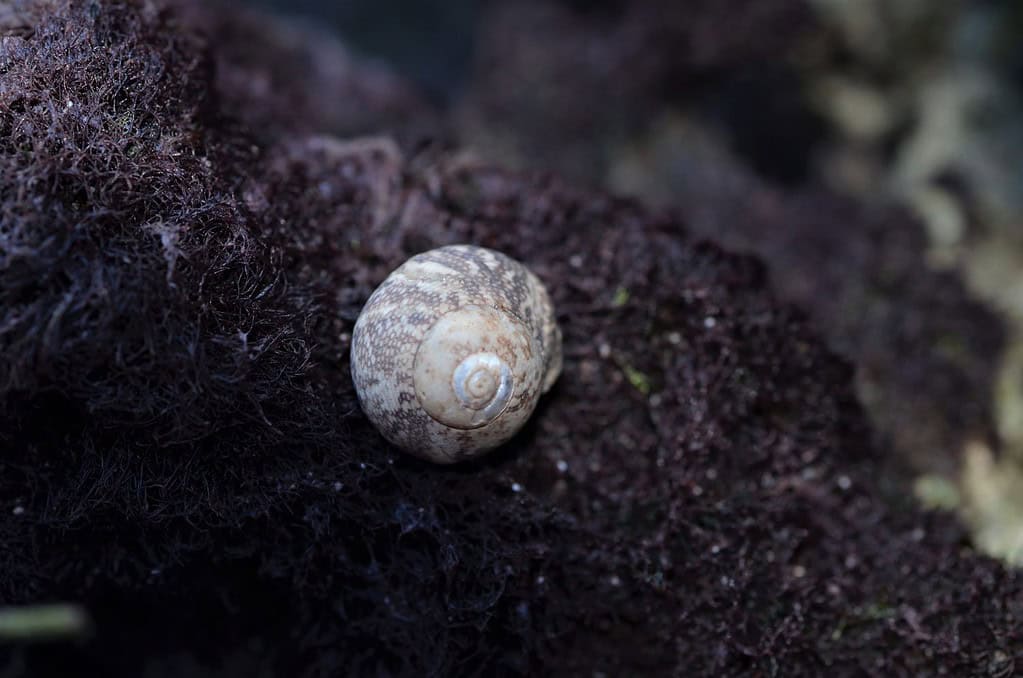
In the Pacific Coast, there are four types of Tegula snails.
©SoFlo Shots/Shutterstock.com
The four types of Tegula snails include the Monterey, dusky, brown, and black snail. These different species aren’t the easiest to differentiate because their appearances are very similar. However, you can tell them apart by observing where they live. The most common in tide pools is the black Tegula snail. The others prefer deeper waters.
6. Anemones
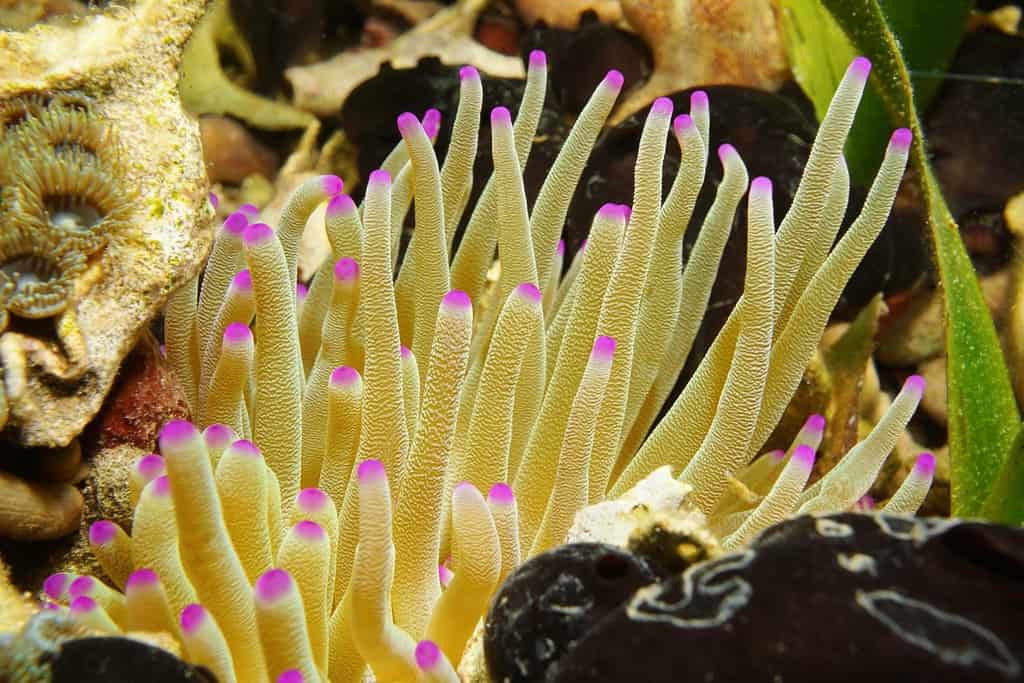
These brightly-colored creatures are carnivorous.
©Damsea/Shutterstock.com
Sea anemones eat fish and small plankton. They are stinging polyps found in the lower part of tide pools as well as the bottom of the sea. They look like plants and flowers, but those tentacles are always at the ready to capture prey. Although they’re predatory, they also develop symbiotic relationships with small fish like the clownfish. In these cases, the clownfish (with a mucus layer of protection) takes shelter within the anemone. When the clownfish enjoys a meal, the anemone gets to snack on all the bits and pieces left over.
7. Seaweed

Although tide pools can be harsh, seaweed thrives in these environments.
©Andriy Nekrasov/Shutterstock.com
Seaweed, also known as algae, is an integral part of the life in tide pools. It provides oxygen, shelter, and food for some of the other living organisms in the environment. The Loveland Living Planet Aquarium explains that seaweed is equipped with little “life vests” that keep it floating closer to the surface of the water, so it can receive sunlight.
8. Barnacles
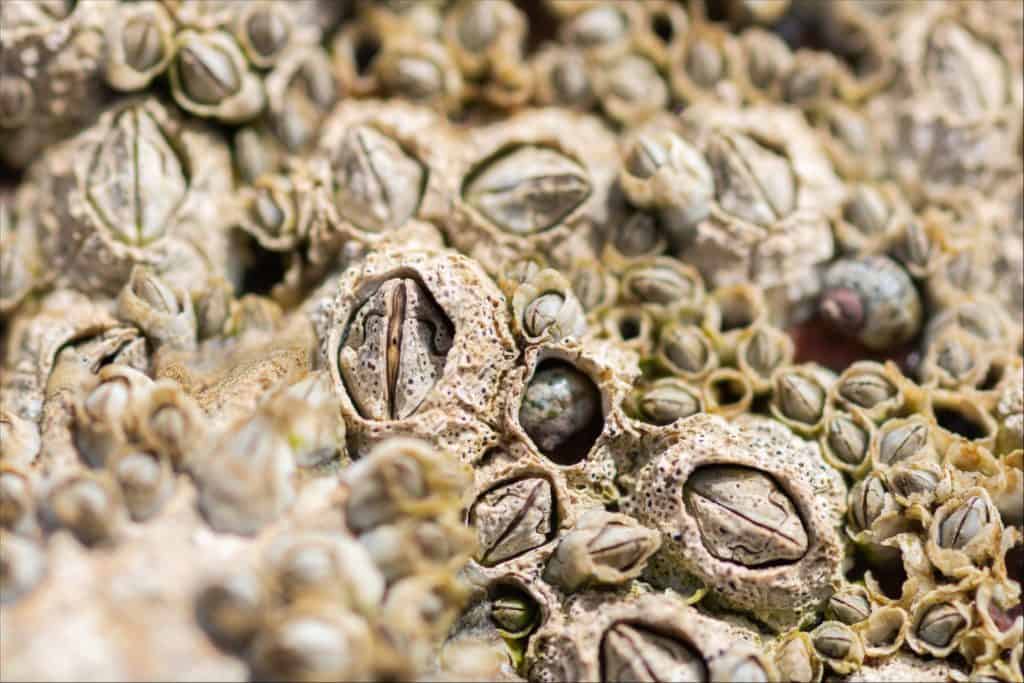
Barnacles are crustaceans.
©Alexisaj/Shutterstock.com
These are sticky creatures in tide pools and according to the National Ocean Service, there are over 1,400 barnacle species known to man. The most common of those is called the acorn barnacle. What makes these creatures sticky is their natural glue. They secrete it and it’s so strong, it’s like cement. They not only stick to one another in tide pools, but they also stick to boats and other vessels.
9. Sea Stars
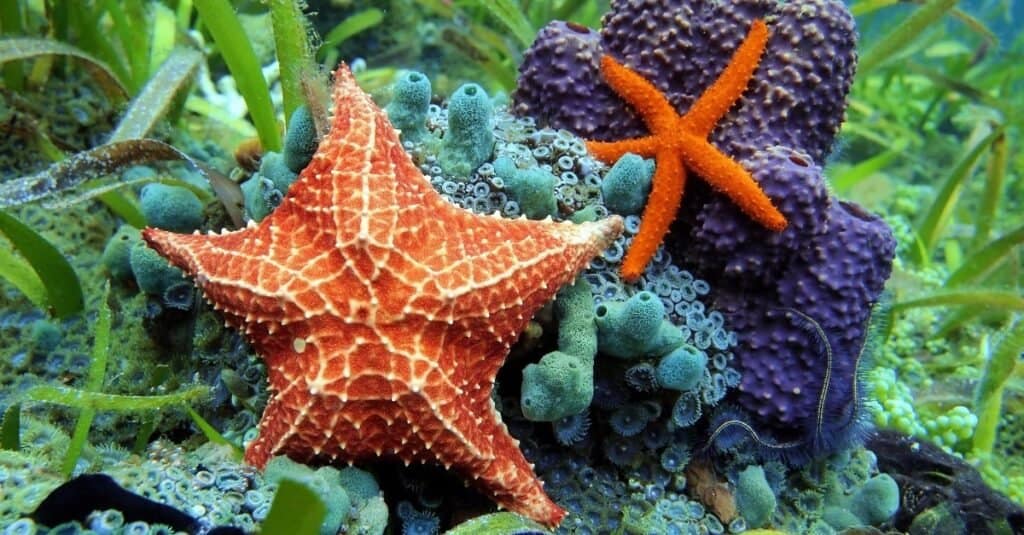
Sea stars thrive in tide pools. Any higher than that and they would dry up.
©iStock.com/Damocean
Tide pools provide safe environments for sea stars. They typically find little crevices and rocks to live. They may also live a little deeper in subtidal waters. To feed, they use their mouths, which are located in the center of their bodies on the underside. They snack on a variety of prey, including sea snails, barnacles, scallops, and mussels. The National Park Service also identifies the animals that eat sea stars. They include seagulls, lobsters, crabs, and bottom dwelling fish. Surprisingly, other sea stars may eat them as well. If a sea star endures an attack, it can detach an arm to get away (and later regrow it).
Thank you for reading! Have some feedback for us? Contact the AZ Animals editorial team.

